
Jan Collaert II or Hans Collaert II (ca. 1561, Antwerp - in or after 1620, Antwerp) was a Flemish engraver and printmaker working in Antwerp around the turn of the 17th century. Collaert also published under the name Jan Baptist Collaert. [1]

Jan Collaert II or Hans Collaert II (ca. 1561, Antwerp - in or after 1620, Antwerp) was a Flemish engraver and printmaker working in Antwerp around the turn of the 17th century. Collaert also published under the name Jan Baptist Collaert. [1]
Jan Collaert was the son of Anna van der Heijde and Jan Collart I and the brother of Adriaen Collaert. [2] [3] He trained under his brother Adriaen as well as with leading Antwerp engravers Philip Galle and Gerard de Jode. He became member of the Antwerp Guild of Saint Luke in 1585 and was the Guild's dean in 1612. [2]
From 1580 through his death c. 1620, Collaert and his brother were both employed by Philip Galle, one of the most prolific print publishers in Europe during the late sixteenth century. [4] The brothers both married a daughter of Galle. Jan married in the late 1590s with Elisabeth Galle, after he became a widower of Elisabeth Firens, whom he had married in 1595. The last entry on Jan Collaert II in the Guild's records dates from the yearbook 1620/21. [2]
His pupils included Barbara van den Broeck and Antony van der Does. [2]

Engravers of the period often worked from drawings done by a different artist and many of both the

Collaert brothers' etchings are recorded as being "after Phillip Gale". Another contemporary draughtsman who provided source material was Maerten de Vos, a Flemish painter in the Mannerist tradition. De Vos was the author of approximately 1600 drawings that later were made into prints. Collaert also made a series of prints after de Vos' drawings. [5]
The series of twenty illustrations- plus a title page- depicting Biblical characters engaged in heroic acts were completed between 1590–1595 in association with Cornelis van Kiel, a Dutch lexicographer and writer, for his Latin text Icones Illustrium Feminarum Veteris Testamenti (The Celebrated Women of the Old Testament). The engravings, "clearly Mannerist in inspiration" [6] are reminiscent of Sandro Botticelli's work, detailed portrayals of Rubenesque figures with tiny heads and expressive hands.
He also produced book illustrations for Antwerp publishing house Plantin Moretus. [2]

In art history, "Old Master" refers to any painter of skill who worked in Europe before about 1800, or a painting by such an artist. An "old master print" is an original print made by an artist in the same period. The term "old master drawing" is used in the same way.

Philip Fruytiers (1610–1666) was a Flemish Baroque painter and engraver. Until the 1960s, he was especially known for his miniature portraits in watercolor and gouache. Since then, several large canvases signed with the monogram PHF have been ascribed to him. These new findings have led to a renewed appreciation for his contribution to the Antwerp Baroque.
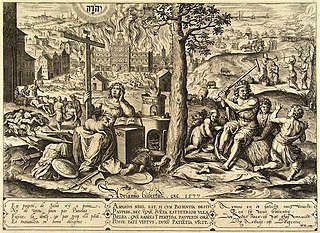
Jan Collaert the Elder or (I), Hans Collaert the Elder or Johannes Collaert (Brussels, between 1525 and 1530 – Antwerp, October 1580) was a Flemish printmaker, publisher, draftsman, tapestry designer, glass painter and designer and engraver of swords. He was the founder of a dynasty of engravers that would play a significant role in establishing Antwerp as one of the leading centres for printmaking in Europe in the second half of the 16th century and the early 17th century.

The Sadeler family were the largest, and probably the most successful of the dynasties of Flemish engravers that were dominant in Northern European printmaking in the later 16th and 17th centuries, as both artists and publishers. As with other dynasties such as the Wierixes and Van de Passe family, the style of family members is very similar, and their work often hard to tell apart in the absence of a signature or date, or evidence of location. Altogether at least ten Sadelers worked as engravers, in the Spanish Netherlands, Germany, Italy, Bohemia and Austria.

Stradanus, Johannes Stradanus, Jan van der Straet or Giovanni Stradano was a Flemish artist active mainly in 16th-century Florence, Italy. He was a wide-ranging talent who worked as an easel and fresco painter, designer of tapestries, draughtsman, designer of prints and pottery decorator. His subject range was varied and included history subjects, mythological scenes, allegories, landscapes, genre scenes, portraits, architectural scenes and animals. After training in his native Flanders, he left his home country and ultimately settled down in Florence, Italy. He became a prominent court artist to the Medici during the second half of the 16th century and worked on the many decorative projects of the court. Stradanus also produced large altarpieces for the most important churches in Florence.
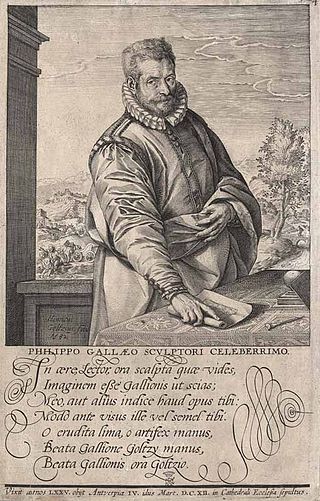
PhilipGalle was a Dutch publisher, best known for publishing old master prints, which he also produced as designer and engraver. He is especially known for his reproductive engravings of paintings.

Hans Bol or Jan Bol, was a Flemish painter, miniature painter, print artist and draftsman. He is known for his landscapes, allegorical and biblical scenes, and genre paintings executed in a late Northern Mannerist style.

Hieronymus Cock, or Hieronymus Wellens de Cock was a Flemish painter and etcher as well as a publisher and distributor of prints. Cock is regarded as one of the most important print publishers of his time in northern Europe. His publishing house played a key role in the transformation of printmaking from an activity of individual artists and craftsmen into an industry based on division of labour. His house published more than 1,100 prints between 1548 and his death in 1570, a vast number by earlier standards.
The Antwerp School was a school of artists active in Antwerp, first during the 16th century when the city was the economic center of the Low Countries, and then during the 17th century when it became the artistic stronghold of the Flemish Baroque under Peter Paul Rubens.

Maerten de Vos, Maerten de Vos the Elder or Marten de Vos was a Flemish painter. He is known mainly for his history and allegorical paintings and portraits. He was, together with the brothers Ambrosius Francken I and Frans Francken I, one of the leading history painters in the Spanish Netherlands after Frans Floris career slumped in the second half of the sixteenth century as a result of the Iconoclastic fury of the Beeldenstorm.

Lucas van Uden was a leading Flemish landscape painter, draughtsman and engraver, who lived and worked in Antwerp. He was a leading landscape painter who collaborated with various local figure painters. His most original works are his drawings.
Events from the year 1561 in art.
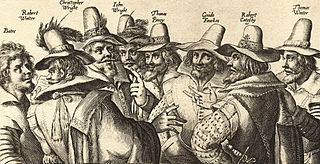
Crispijn van de Passe the Elder, or de Passe was a Dutch publisher and engraver and founder of a dynasty of engravers comparable to the Wierix family and the Sadelers, though mostly at a more mundane commercial level. Most of their engravings were portraits, book title-pages, and the like, with relatively few grander narrative subjects. As with the other dynasties, their style is very similar, and hard to tell apart in the absence of a signature or date, or evidence of location. Many of the family could produce their own designs, and have left drawings.
Boetius à Bolswert was a Flemish engraver of Friesland origin. In his time the paintings of Peter Paul Rubens called forth new endeavours by engravers to imitate or reproduce the breadth, density of mass and dynamic illumination of those works. Boetius Bolswert was an important figure in this movement, not least because he was the elder brother and instructor of the engraver Schelte à Bolswert, whose reproductions of Rubens's landscapes were most highly esteemed in their own right.

Lodewijk de Vadder was a Flemish Baroque landscape painter, draughtsman, engraver and tapestry designer. His landscapes represent a move away from the Mannerist tradition of landscapes painting in Flemish art towards a more naturalistic approach exemplified by looser brushwork and an emphasis on atmospheric effects. He was the first Flemish landscape painter who painted dune landscapes as the primary feature of his landscapes. While his loose brush handling shows the influence of Rubens and Adriaen Brouwer, his restrained palette shows his awareness of developments in the Dutch Republic.

Jan van den Hecke or Jan van den Hecke the Elder (1620–1684) was a Flemish Baroque painter, draughtsman, printmaker and engraver, mainly known for his still lifes, landscapes and battle scenes. After training in Antwerp, he spent time in Rome, where he had important patrons. After his return to Flanders, he worked for a while in Brussels, probably painting flower still lifes for Archduke Leopold Wilhelm of Austria, the Austrian governor of the Spanish Netherlands, before returning to work in Antwerp.
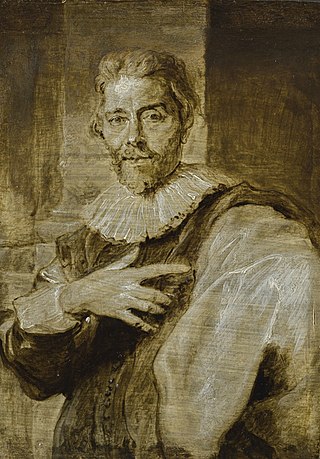
Jan Baptist Barbé or Jan-Baptist Barbé (1578–1649) was a Flemish engraver, publisher and art dealer active in Antwerp. He is known for his engravings after his own designs as well as for his reproductive engravings.
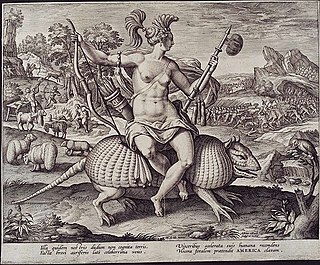
Adriaen Collaert was a Flemish designer and engraver.
Pieter Perret was a Flemish engraver who worked in Madrid in the service of Philip II of Spain.